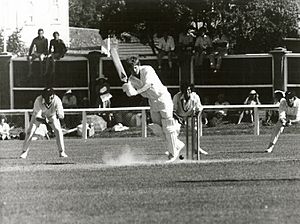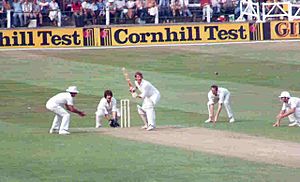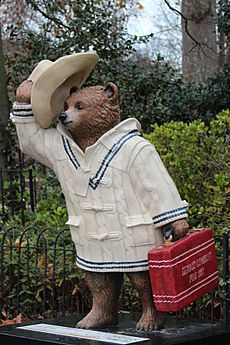Ian Botham facts for kids
Quick facts for kids
The Lord Botham
|
||||||||||||||||||||||||||||||||||||||||||||||||||||||||||||||||||||||||||||||||||||||||||||||||||||||||||||||||||||||||||||||||
|---|---|---|---|---|---|---|---|---|---|---|---|---|---|---|---|---|---|---|---|---|---|---|---|---|---|---|---|---|---|---|---|---|---|---|---|---|---|---|---|---|---|---|---|---|---|---|---|---|---|---|---|---|---|---|---|---|---|---|---|---|---|---|---|---|---|---|---|---|---|---|---|---|---|---|---|---|---|---|---|---|---|---|---|---|---|---|---|---|---|---|---|---|---|---|---|---|---|---|---|---|---|---|---|---|---|---|---|---|---|---|---|---|---|---|---|---|---|---|---|---|---|---|---|---|---|---|---|---|
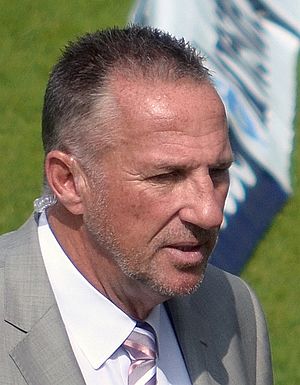
Botham in 2013
|
||||||||||||||||||||||||||||||||||||||||||||||||||||||||||||||||||||||||||||||||||||||||||||||||||||||||||||||||||||||||||||||||
| Member of the House of Lords Lord Temporal |
||||||||||||||||||||||||||||||||||||||||||||||||||||||||||||||||||||||||||||||||||||||||||||||||||||||||||||||||||||||||||||||||
| Assumed office 5 October 2020 Life peerage |
||||||||||||||||||||||||||||||||||||||||||||||||||||||||||||||||||||||||||||||||||||||||||||||||||||||||||||||||||||||||||||||||
| Personal details | ||||||||||||||||||||||||||||||||||||||||||||||||||||||||||||||||||||||||||||||||||||||||||||||||||||||||||||||||||||||||||||||||
| Born | 24 November 1955 Heswall, England |
|||||||||||||||||||||||||||||||||||||||||||||||||||||||||||||||||||||||||||||||||||||||||||||||||||||||||||||||||||||||||||||||
|
||||||||||||||||||||||||||||||||||||||||||||||||||||||||||||||||||||||||||||||||||||||||||||||||||||||||||||||||||||||||||||||||
|
Association football career
|
||||||||||||||||||||||||||||||||||||||||||||||||||||||||||||||||||||||||||||||||||||||||||||||||||||||||||||||||||||||||||||||||
Ian Terence Botham, Baron Botham (born 24 November 1955), is a famous English sportsman. He is a cricket commentator and a member of the House of Lords. He was a world-class cricketer and is the chairman of Durham County Cricket Club. Many people consider him one of the greatest all-rounders in cricket history. An all-rounder is a player who is good at both batting and bowling.
Botham played for the England team in both Test and One-Day International cricket. He helped England finish as runners-up in two World Cups, in 1979 and 1992. He played for several county clubs, including Somerset and Worcestershire.
As a right-handed batsman, he was known for his powerful hitting. As a right-arm fast-medium bowler, he was skilled at swing bowling. In Test cricket, he scored 14 centuries. For a time, he held the world record for the most wickets taken in Test matches. In 2009, he was welcomed into the ICC Cricket Hall of Fame.
Outside of cricket, Botham was also a talented footballer. He played professionally for Scunthorpe United. He is also known for his charity work, raising millions of pounds for research into childhood leukaemia. In 2020, he was given a life peerage, which means he became a member of the House of Lords.
Contents
Early Life and Sporting Talent
Ian Botham was born in Heswall, England. His family moved to Yeovil when he was young. Both of his parents played cricket, and Ian loved the sport from a very early age. He started playing for his school teams in cricket and football when he was nine. This was two years earlier than most other children.
Playing against older boys made him a stronger player. He learned to hit the ball very hard. By the time he was 12, he was already playing for the Yeovil Cricket Club's second team.
At school, he was captain of the under-16 cricket team when he was only 13. His skill caught the attention of Somerset County Cricket Club. At 15, he had to make a big choice. The manager of Crystal Palace football club offered him a chance to become a professional footballer. But Botham had already signed a contract with Somerset. He decided to focus on cricket because he believed he was better at it.
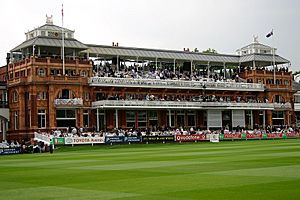
In 1972, at age 16, Botham went to work at Lord's in London. He did many jobs, like cleaning windows and selling scorecards. He also got to practice cricket a lot. A famous coach named Tom Cartwright saw his talent. Cartwright taught him the basics of swing bowling, which Botham learned very quickly.
Cricket Career Highlights
Botham's career was full of amazing moments. He was a true all-rounder, which means he excelled at both batting and bowling.
Starting at Somerset
Botham made his first senior appearance for Somerset in 1973. He was only 17. The next year, he became a regular player. In one famous match against Hampshire, a fast ball hit him in the mouth. Even though he was bleeding, he refused to leave the field. He went on to score 45 runs and helped his team win. This showed everyone how tough and determined he was.
By 1976, he was one of Somerset's best players. He scored his first century (100 or more runs in an innings) that year. His great performance earned him a place on the England team.
England Debut and "Botham's Ashes"
Botham made his Test debut for England in 1977 against Australia. He made an immediate impact, taking five wickets in his first match.
In 1980, he became the second player in Test history to score 100 runs and take 10 wickets in the same match. This amazing achievement happened in a special Test match in India.
The 1981 Ashes series against Australia is perhaps what he is most famous for. The series is often called "Botham's Ashes" because of his incredible performances. In the third Test at Headingley, England was in a hopeless position. They were forced to follow-on (bat again after a very low first-innings score).
When Botham came to bat, England was close to losing. But he scored an amazing 149 runs and gave England a small lead. Then, bowler Bob Willis took 8 wickets for 43 runs, and England won the match. It was only the second time in history that a team had won a Test after following on.
Botham continued his heroics in the next two matches. At Edgbaston, he took five wickets for only one run in a brilliant spell of bowling. At Old Trafford, he scored a powerful 118 runs. England won the series 3–1, and Botham was named Man of the Series.
World Records and Later Career
In 1986, Botham broke the world record for the most wickets in Test cricket. He passed the record of Australian bowler Dennis Lillee. Botham held this record for two years.
He left Somerset in 1986 and joined Worcestershire. He helped them win the County Championship in 1988 and 1989.
Botham played in the 1992 Cricket World Cup. He helped England reach the final, where they lost to Pakistan. He retired from cricket in 1993 after playing for the new county team, Durham.
Life After Cricket
After retiring, Botham became a popular cricket commentator for Sky Sports. He is known for his clear and witty analysis of the game.
Charity Work
Botham is famous for his charity work. In 1977, while at a hospital for a foot injury, he accidentally walked into a children's ward. He was very moved to see children suffering from leukaemia. This inspired him to start raising money for research.
Since 1985, he has completed 12 long-distance charity walks. He has raised over £12 million for Bloodwise, a blood cancer charity. For his services to cricket and charity, he was made a knight by Queen Elizabeth II in 2007.
House of Lords
In 2020, Botham was nominated for a life peerage. This is a special honour that allows someone to be a member of the House of Lords, which is part of the UK Parliament. He took the title Baron Botham. In 2021, he was appointed as the UK's Trade Envoy to Australia.
Personal Life
Ian Botham married his wife, Kathryn, in 1976. They have a son, Liam, and two daughters. Liam also became a professional sportsman, playing cricket, rugby, and football.
Botham has many hobbies outside of cricket. He is a keen golfer and enjoys fishing and shooting. He has even hosted a TV series about fly fishing.


